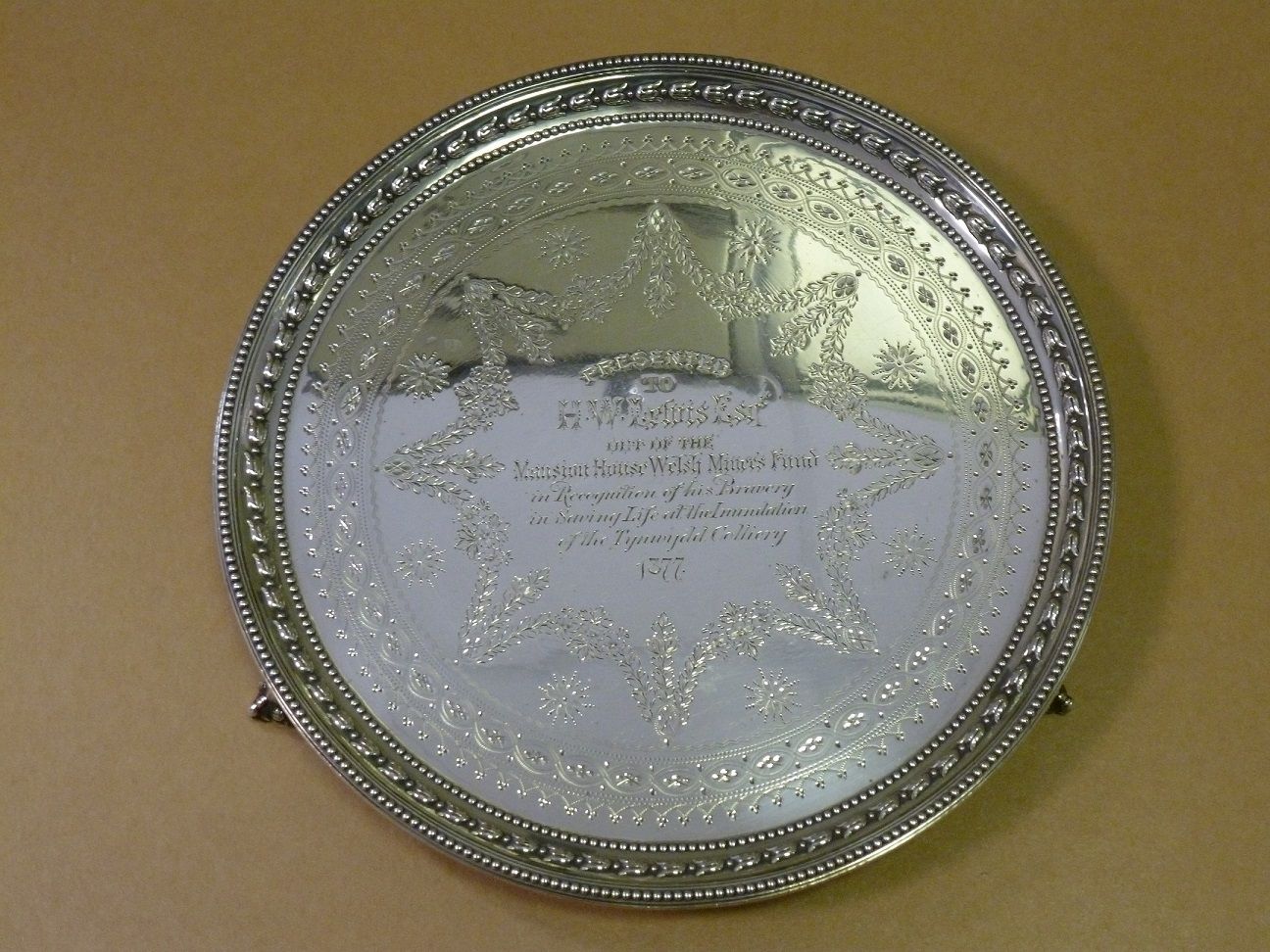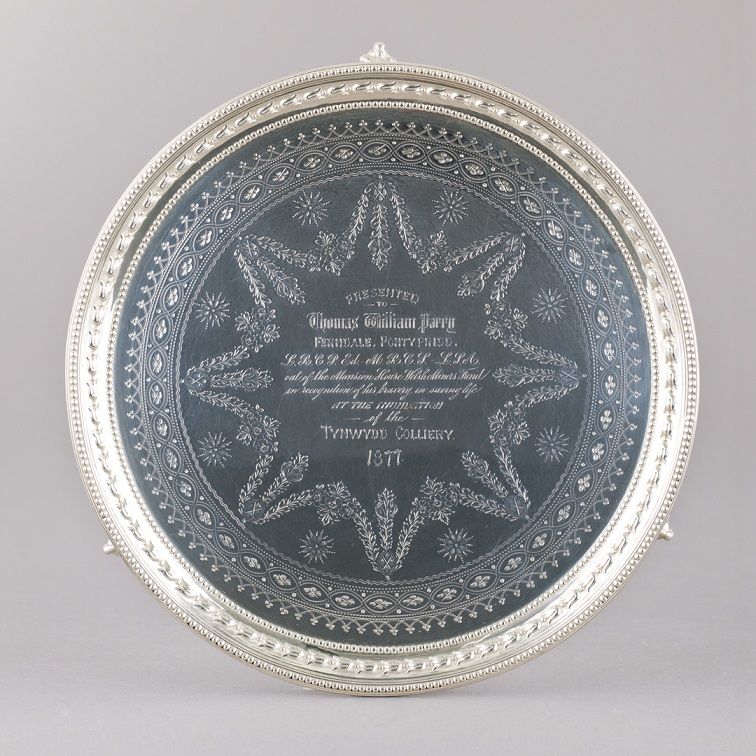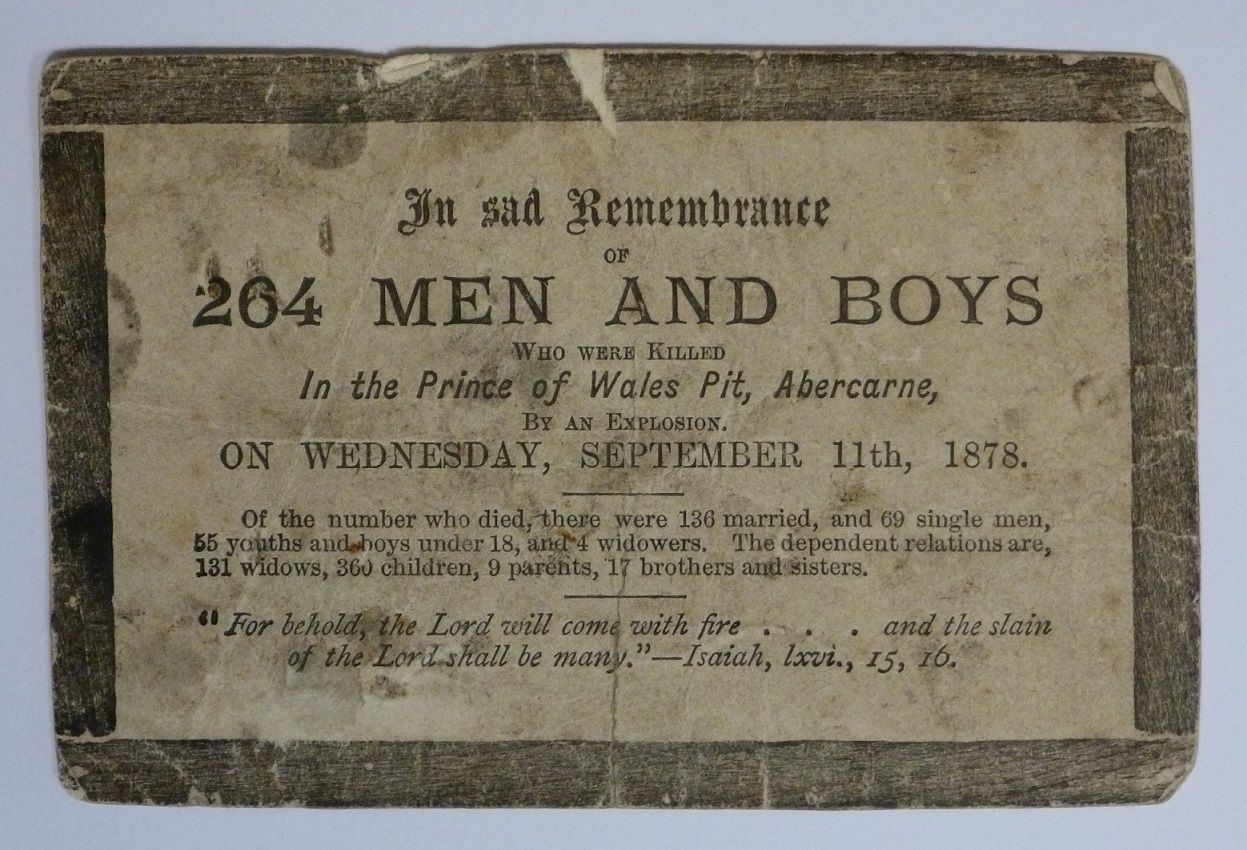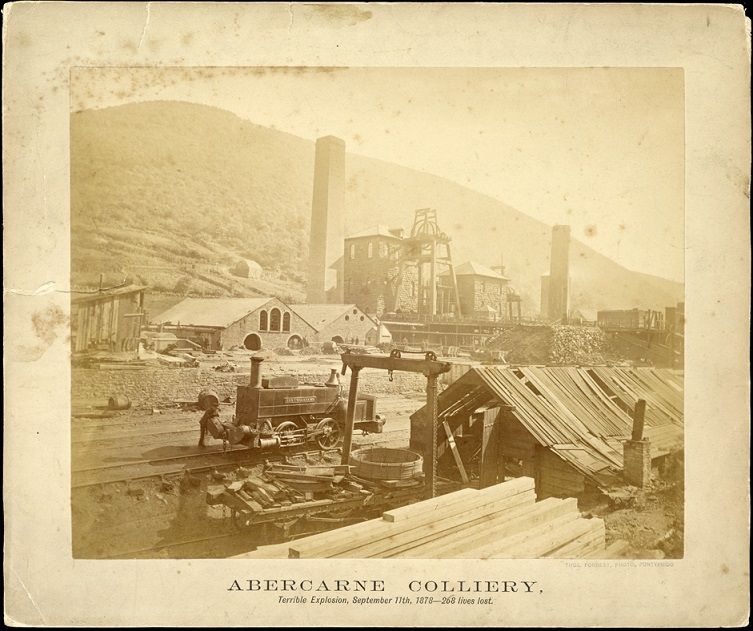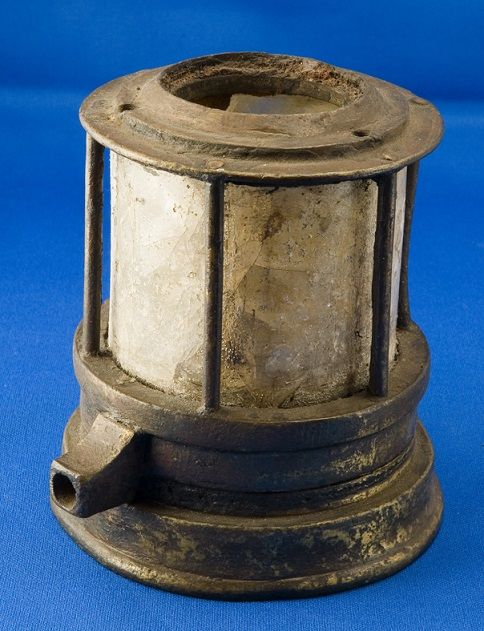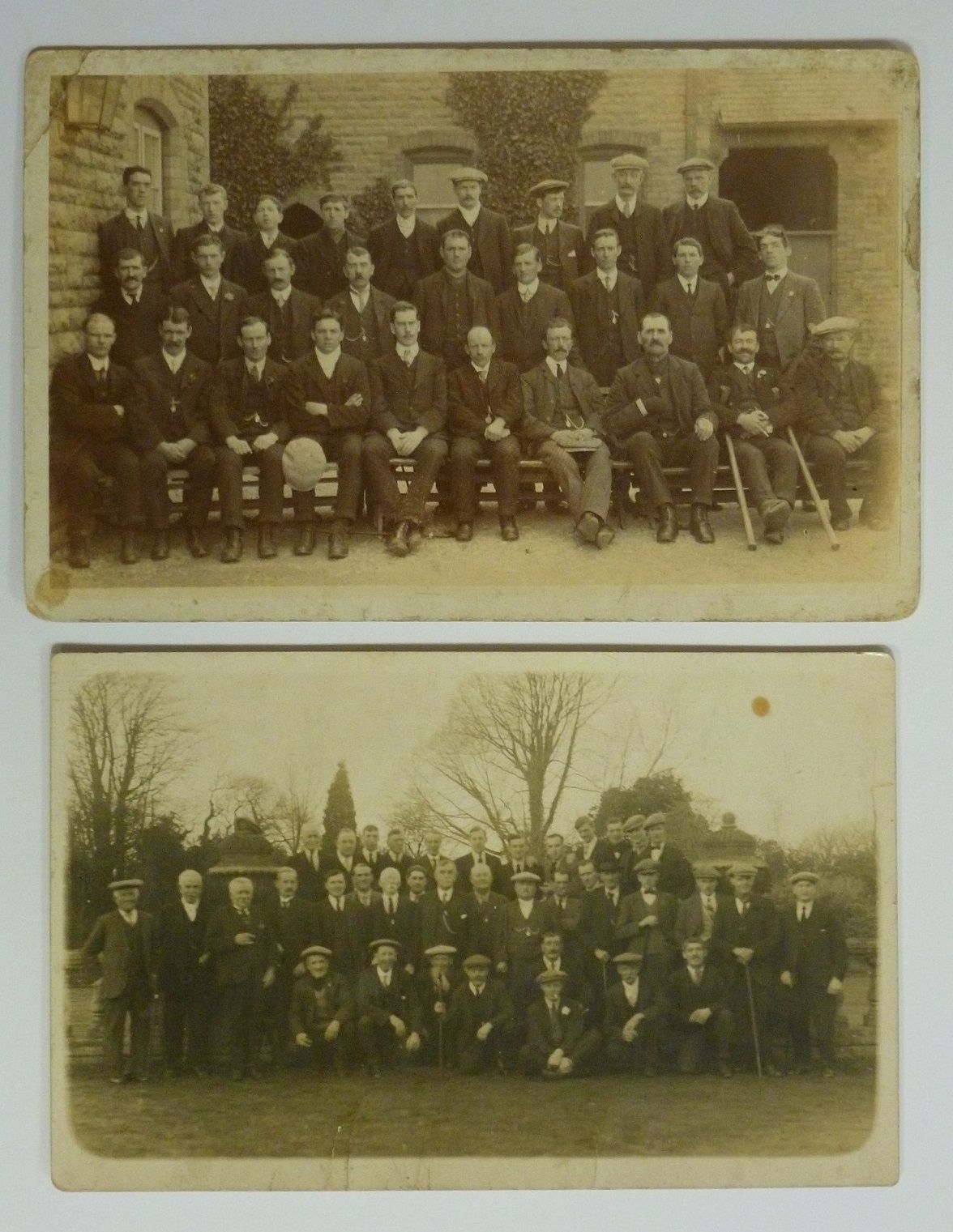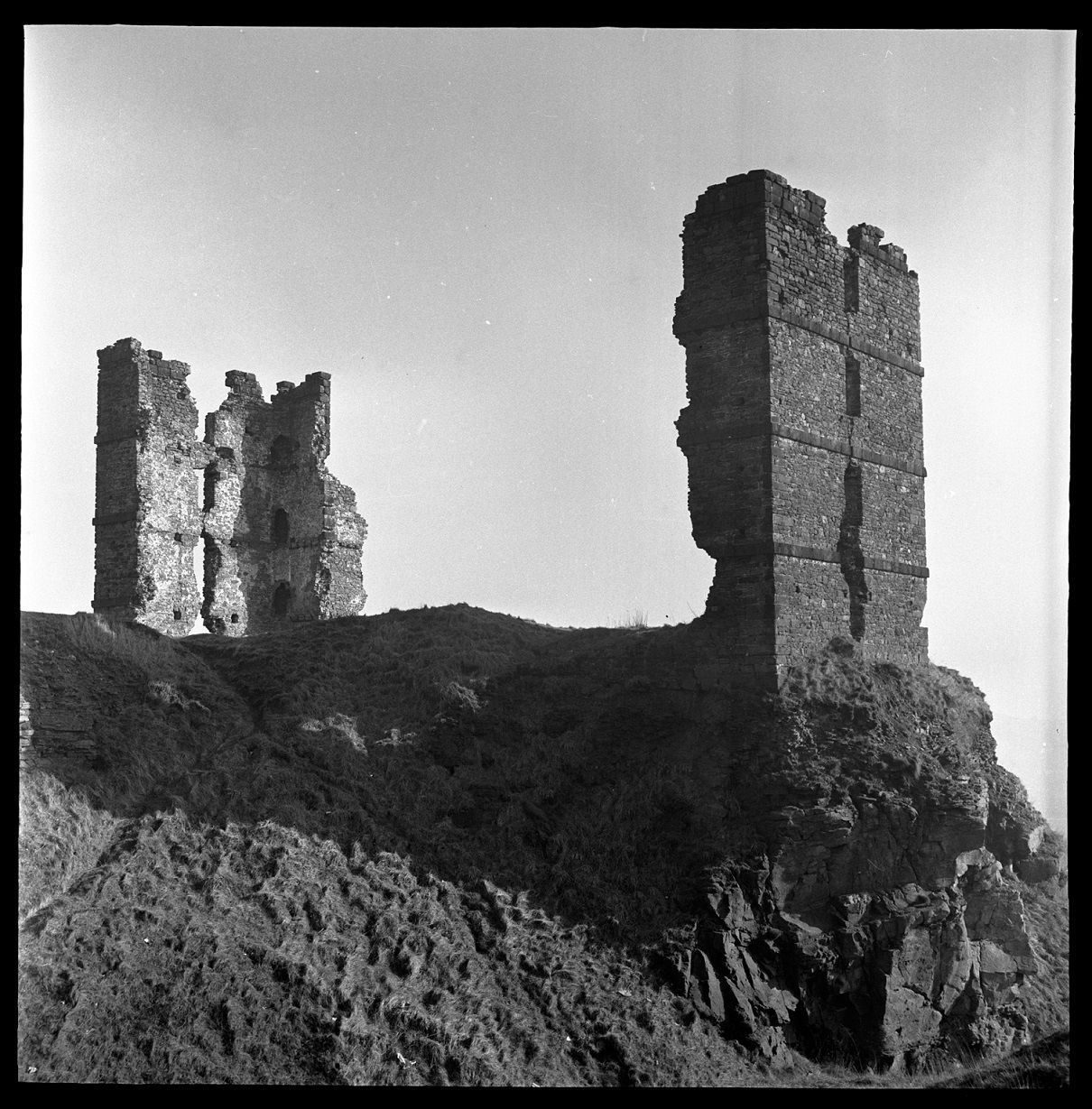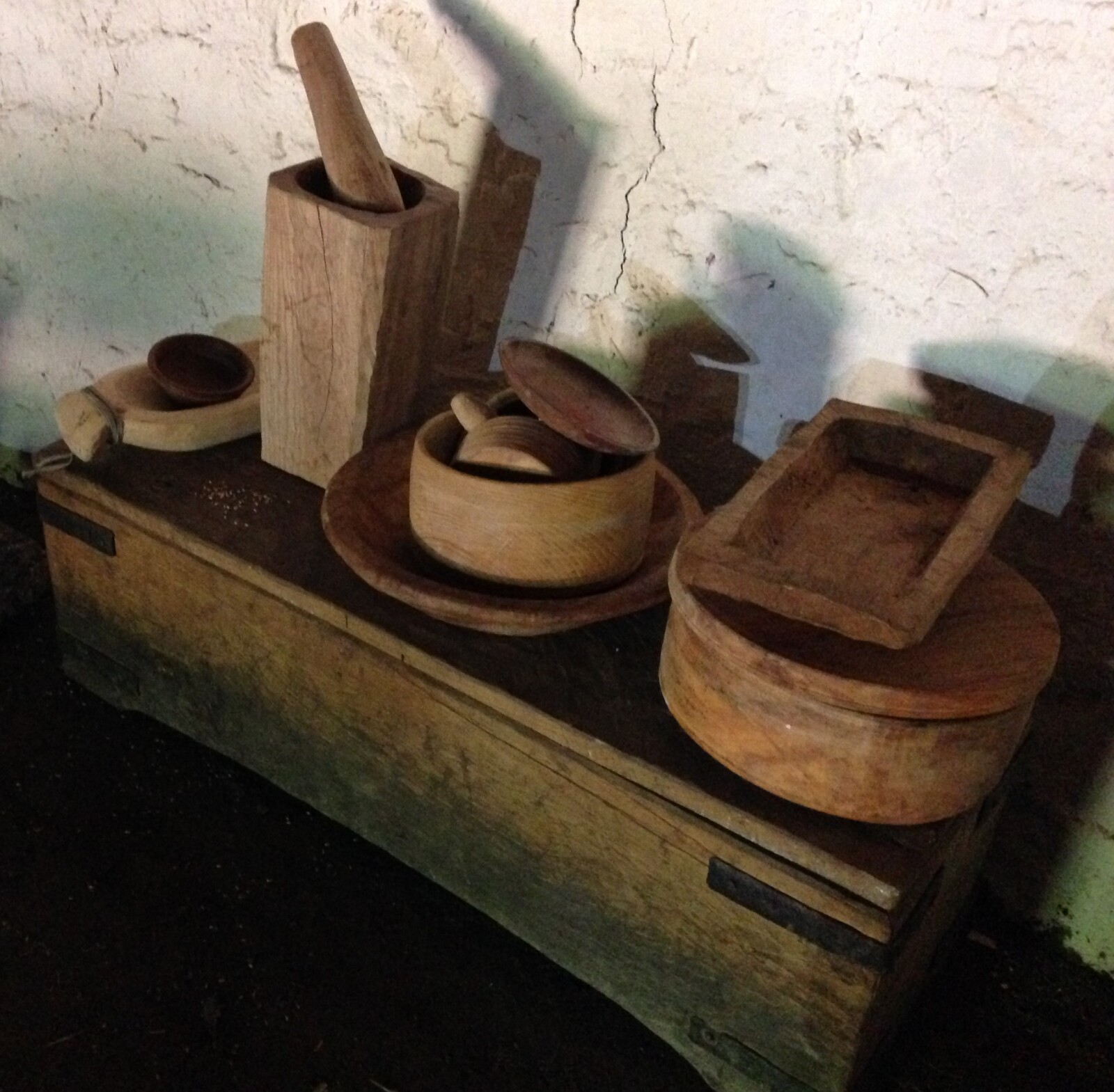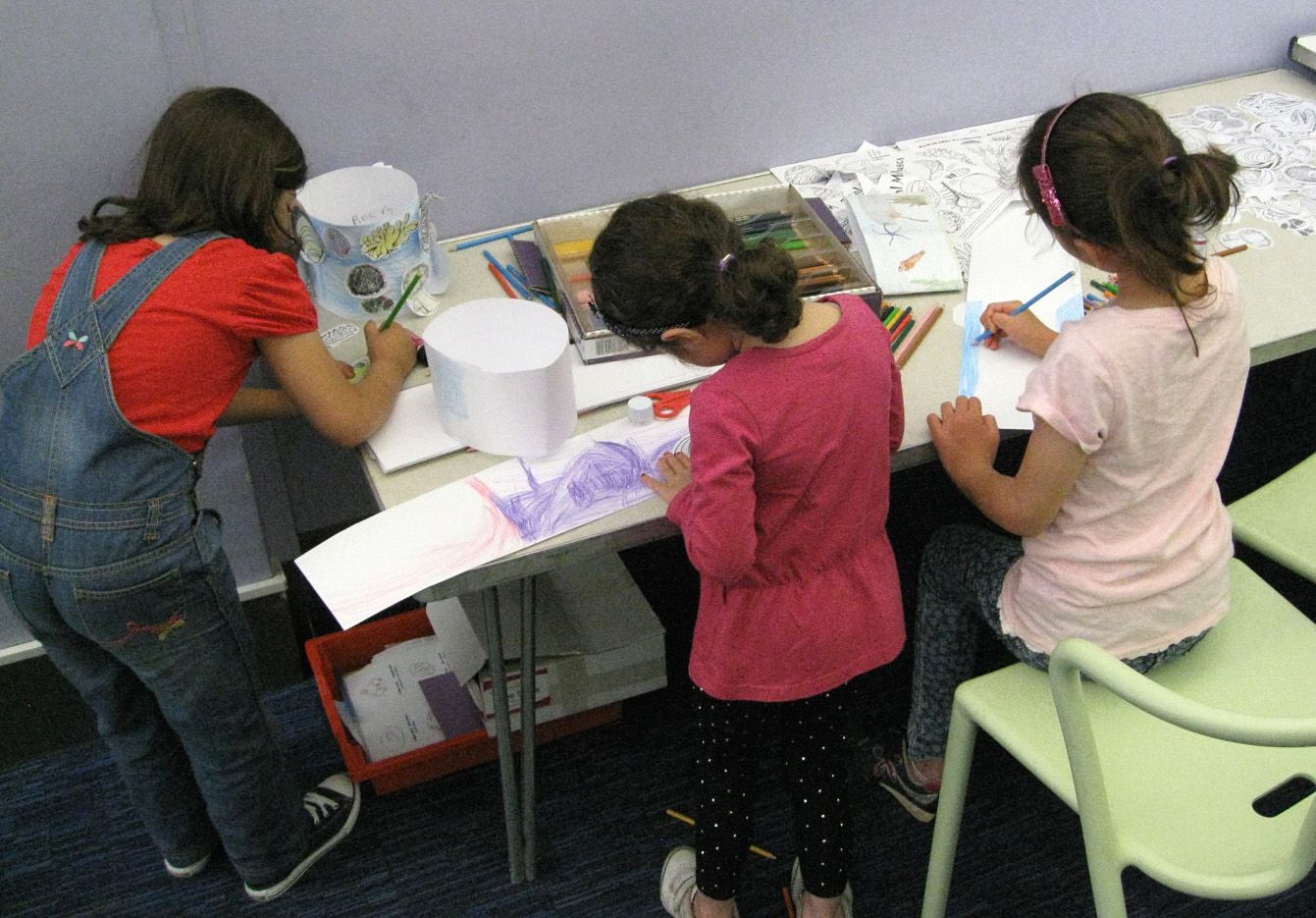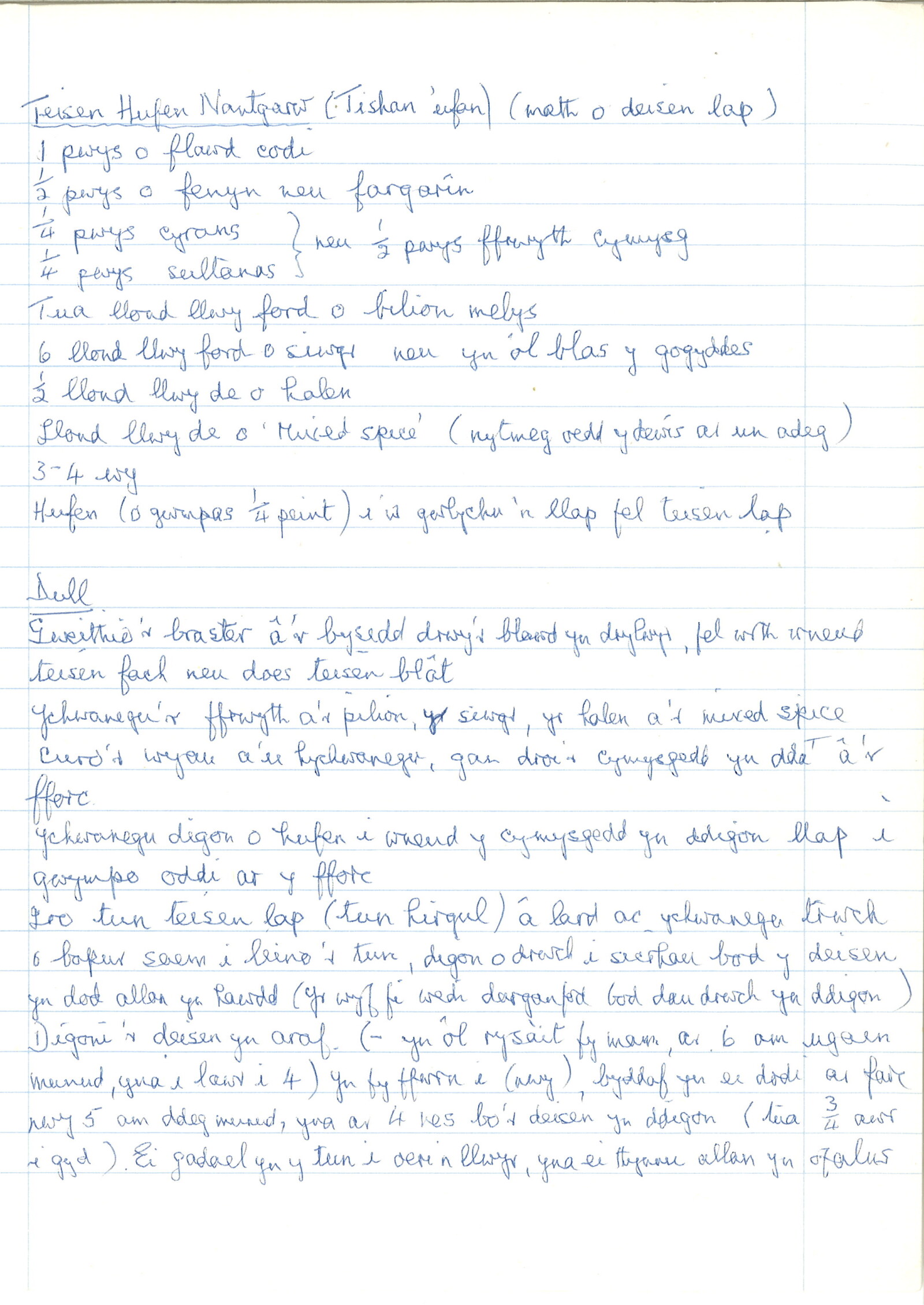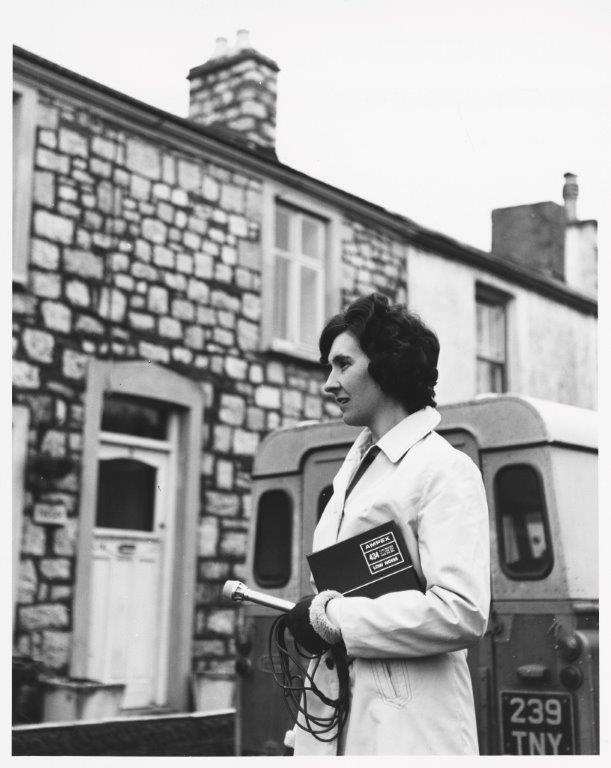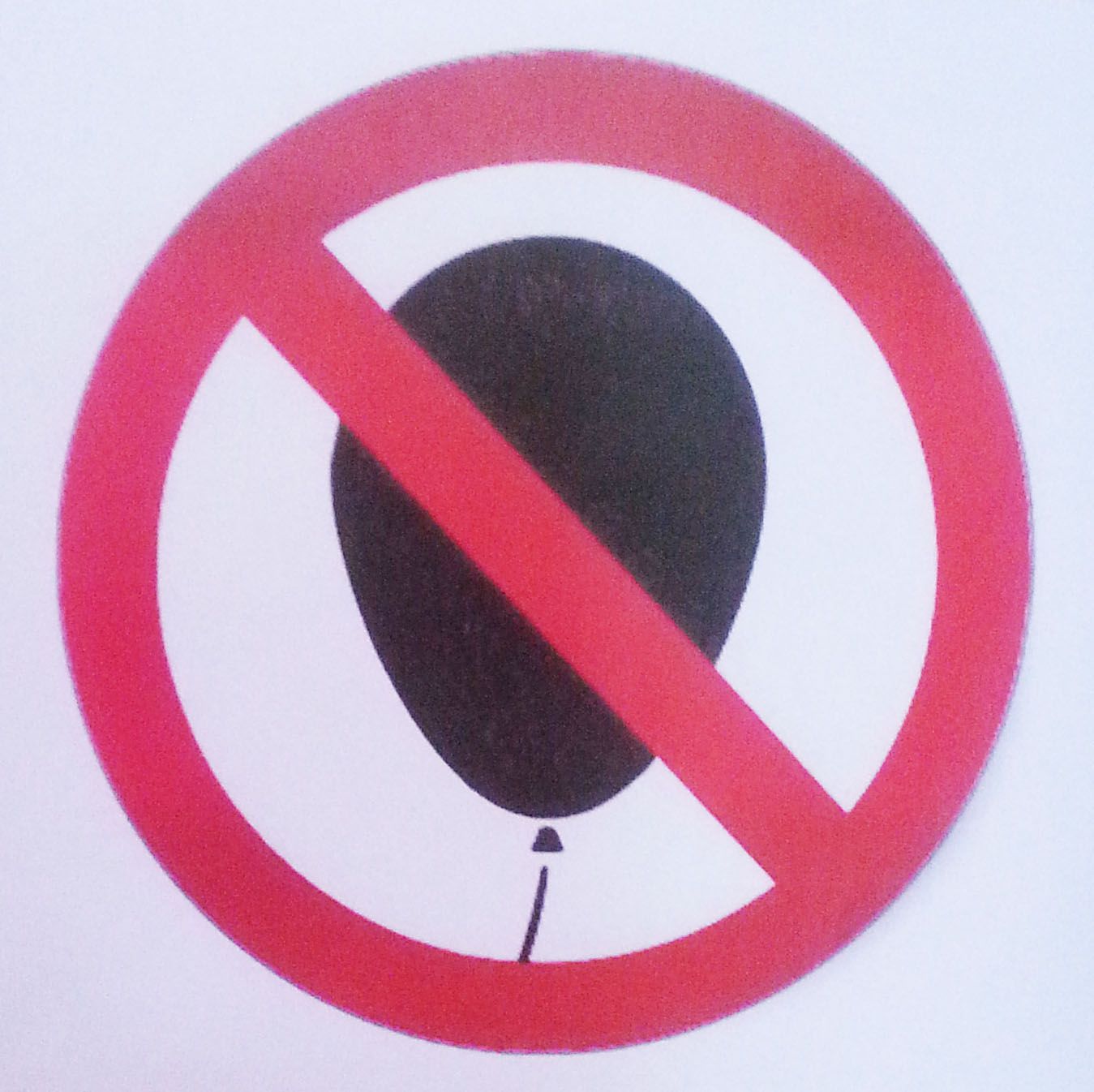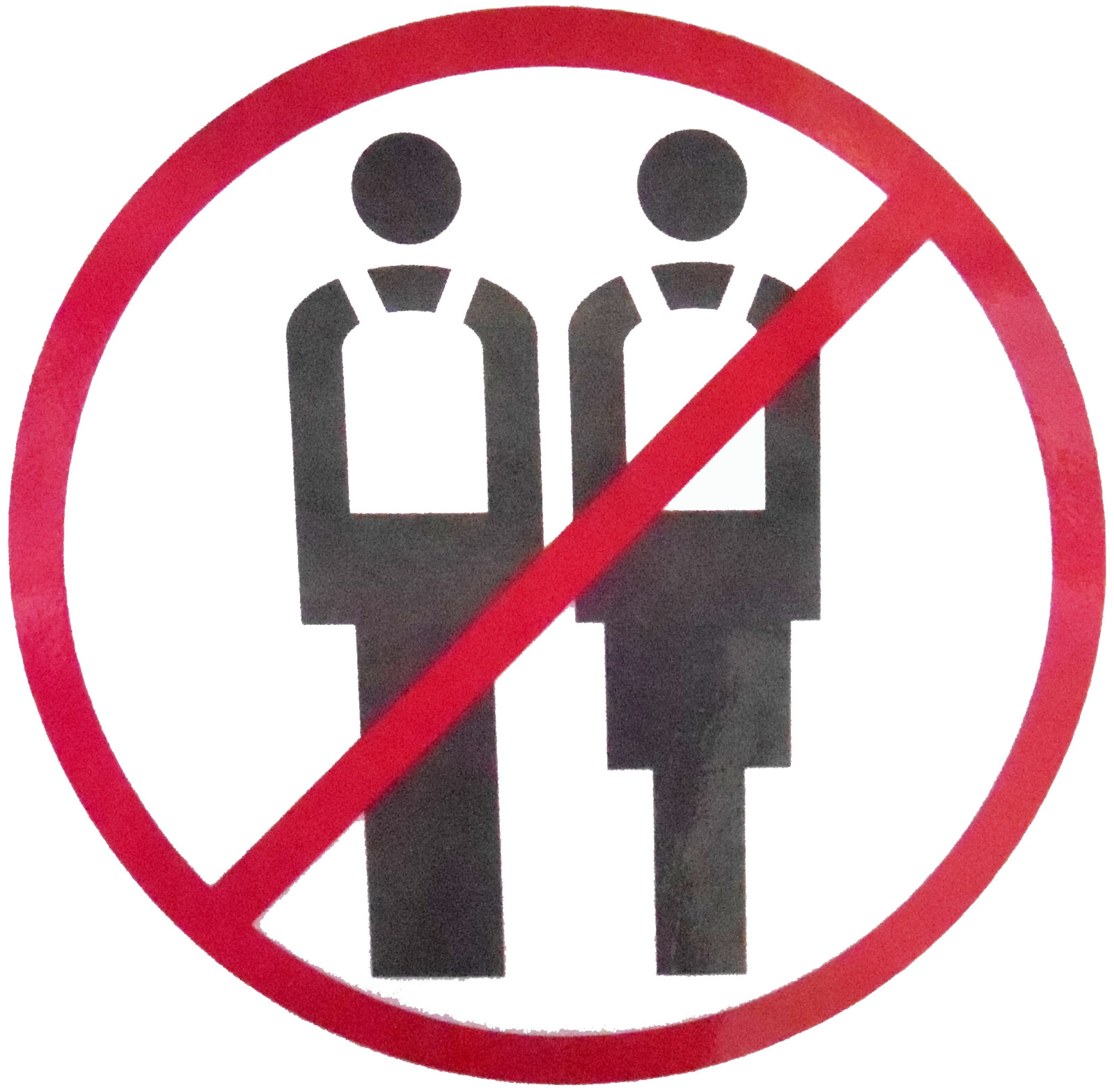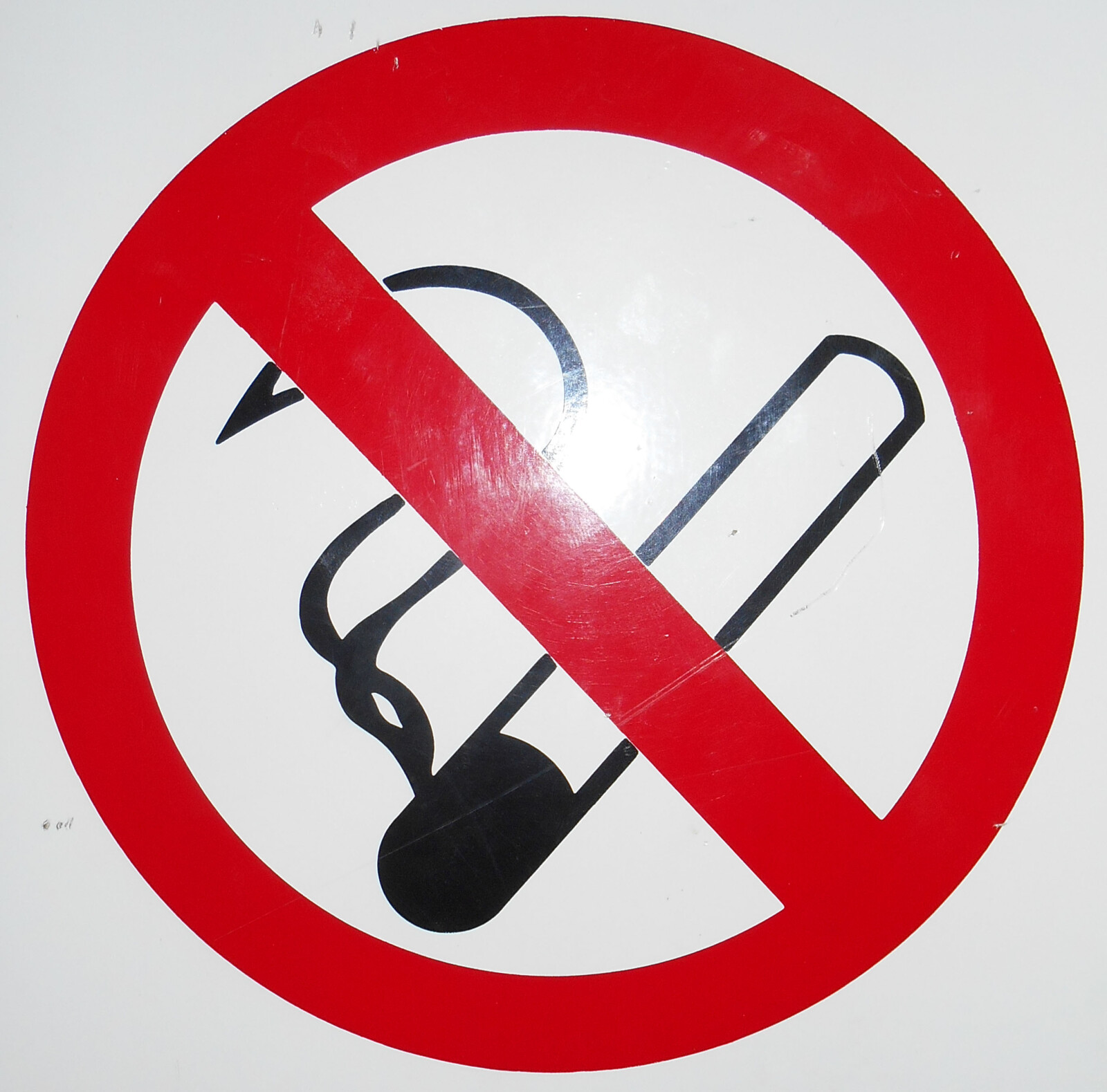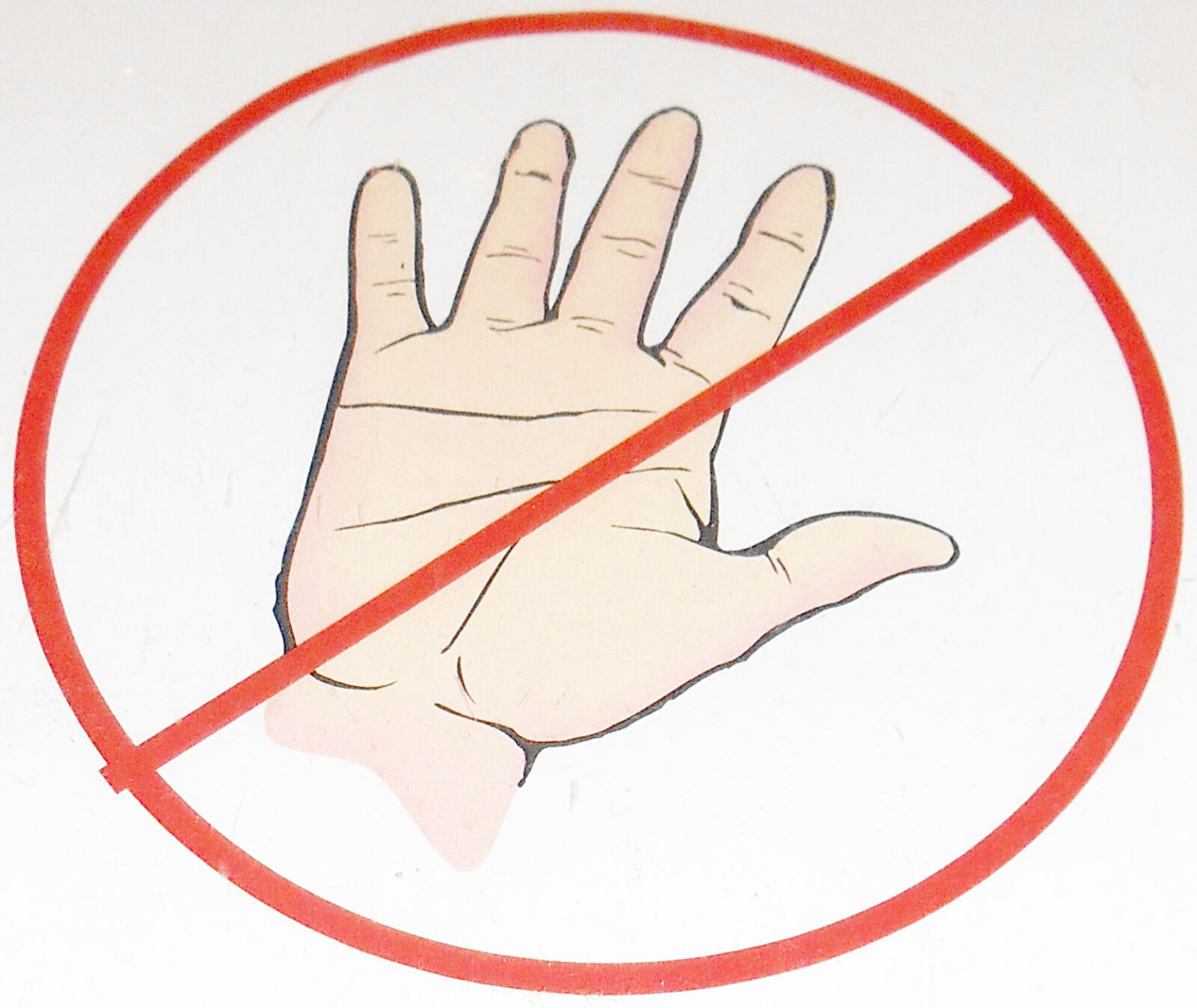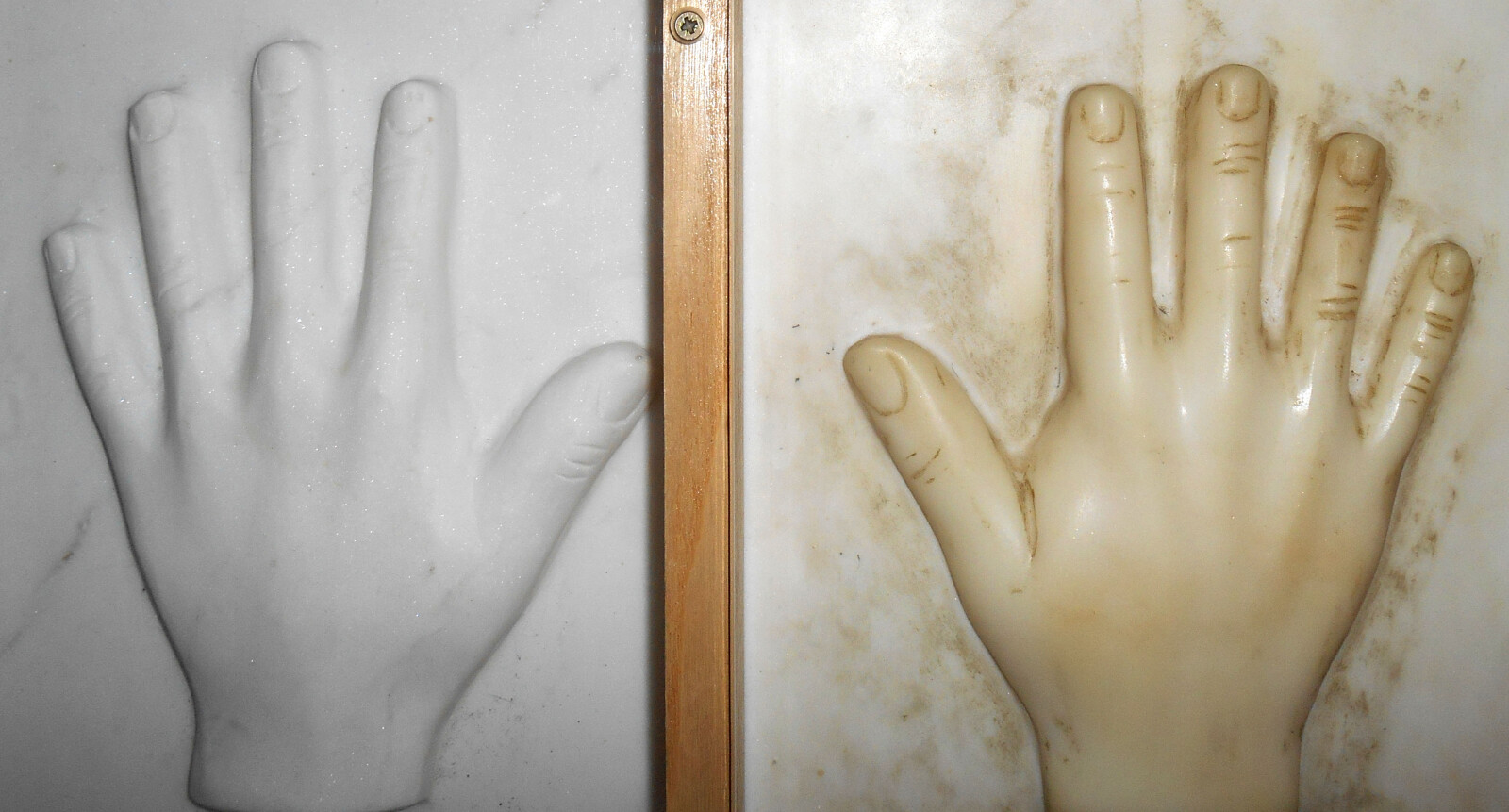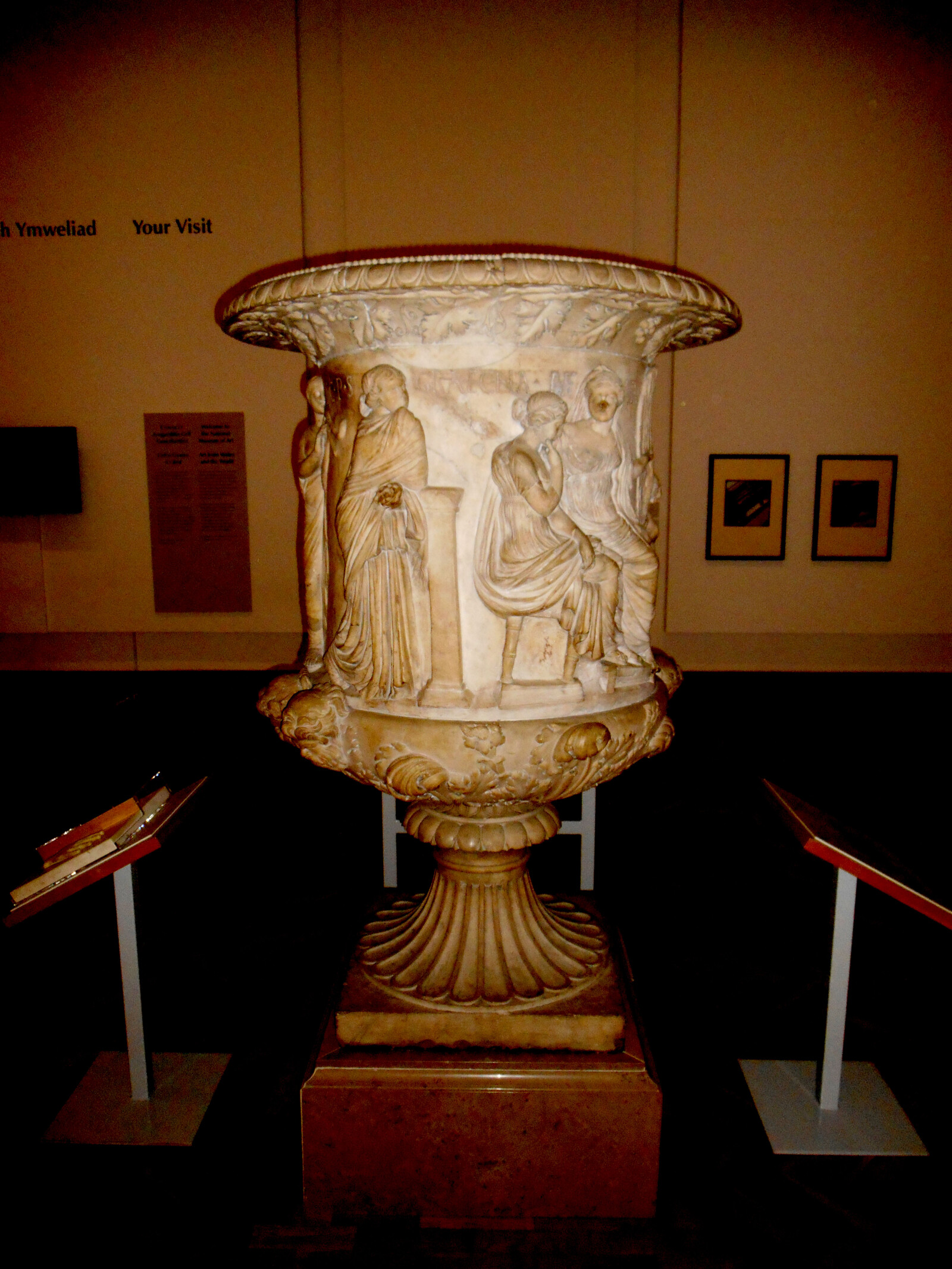Bryn Eryr: from house to home
, 18 August 2015
A lot of progress has been made since my last blog post. The thatching has been completed and the final stages of landscaping are underway. An earthen bank has been built around the two roundhouses, replicating the formidable defences of the original site on Anglesey. A turf-roofed shelter has been built behind the houses, which is to be used as an outdoor workshop as well as an additional educational facility. Its walls are of clom (a mixture of clay, subsoil and aggregate) just like the roundhouses, but its turf roof represents another roofing material arguably as old as thatching itself. A cobbled surface has been created outside the front of the roundhouses, again, reminiscent of the original site.
Recently, my work has focused on furnishing the interior of the houses. The larger of the two houses will remain fairly empty (other than a hearth and a wooden bench that circumnavigates its inner perimeter) so that it can be used as a classroom and demonstration area. The smaller house has been dressed to display Iron Age life. Within are some of the furnishings expected of any Iron Age house: a hearth for warmth, a bed for sleeping, a loom for weaving clothing and blankets – along with wooden chests to store them in, and a cauldron for cooking food. Nearly all of the items on display are based on period examples that have managed to survive 2,000 years of time. For instance, the cauldron is a replica of a well-preserved copper and iron cooking pot from Llyn Cerrig Bach – only 25km away from the Bryn Eryr site. The iron fire-dogs are simplified replicas of the Capel Garmon fire-dog which was discovered not far away in Denbighshire. The wooden bowls are replicas of those found at the Breiddin hillfort in Montgomeryshire, and the quern stones (for grinding corn into flour) are replicas of ones found within the Bryn Eryr roundhouses themselves. We have a full wood-working tool-kit based on examples from hillforts such as Tre’r Ceiri and Castell Henllys. Even the blankets on the bed have been faithfully copied from surviving scraps of textile.
Now that the house has been faithfully dressed with period furnishings, we can use the space to demonstrate what life was like within a roundhouse. Furthermore, with the aid of craftspeople, re-enactors and volunteers, we can contribute to a deeper understanding of life in the Iron Age, and help turn this house into a home.
